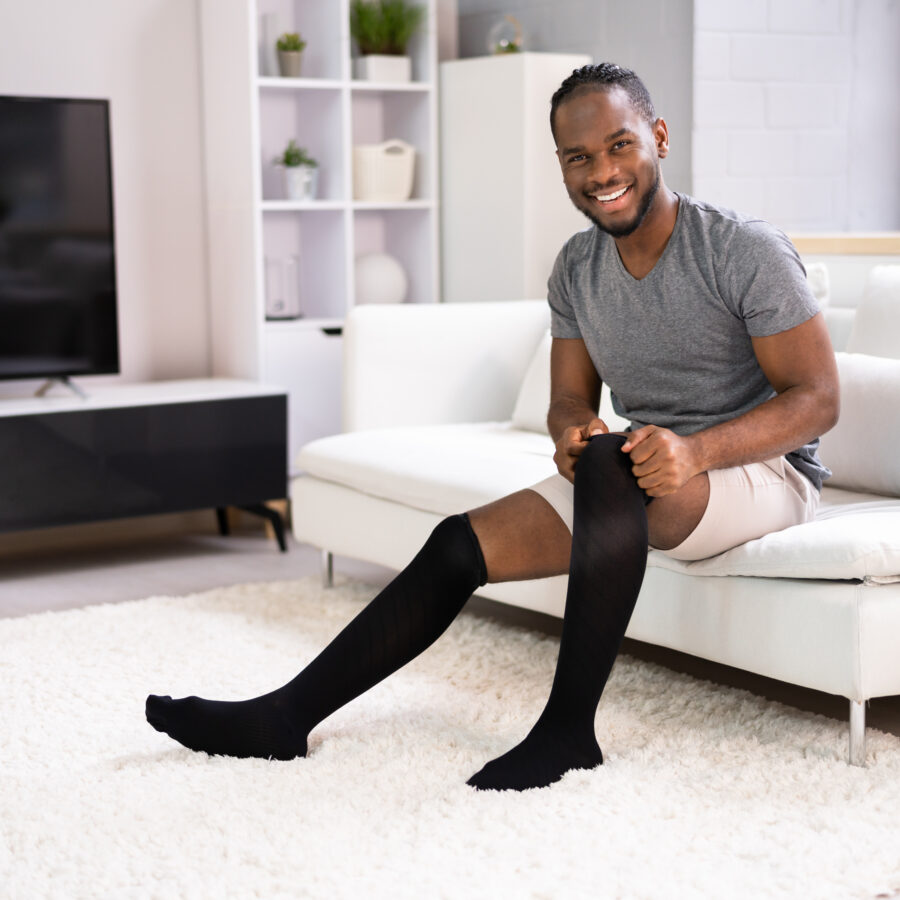Vein Disease
The body has many veins, and the smallest veins are part of the reticular vein system. This is a web of tiny veins just below the skin. Superficial veins are largerand deeper to the skin, and perforator veins are short veins that connect the superficial veins to the deep veins which run through the core of your leg.
What is Valve Disease?
Veins bring blood back to the heart. Valves are small flaps within the vein that open to let blood through and close to prevent blood flowing backwards (toward the ankles). When veins stretch and enlarge, the valves inside the veins do not close properly. This can cause the large, ropey veins you see, called varicose veins.
What are Varicose Veins?
A large, ropey vein that can cause leg fatigue, heaviness, bleeding, itching, throbbing, aching, ulceration, and brown skin changes. These veins may be a medical issue if you have any symptoms, and your vascular specialist should evaluate you.
What are Venous Ulcers?
Open, painful wounds that can happen on your legs if the venous disease is severe and left untreated.
What is a Reflux Ultrasound?
Ultrasonography that uses sound waves to create pictures of the veins and to identify areas of reflux or damage to the vein, as well as blood clots.
RFA Treatment
What is Radiofrequency Ablation (RFA)?
This is the gold standard of treatment for superficial vein disease. After local numbing medication is used, your provider will put a catheter into the problem vein. This catheter is carefully positioned by your provider using ultrasound, and you are also given additional numbing medicine to surround the vein.
The heat source is then turned on, which damages the inner lining of the vein, causing the vein to close down. After a segment is treated, the catheter is slowly pulled back until the entire vein is treated. Nothing remains inside your body once the procedure is done.
Over time, the vein absorbs into the body as scar tissue. By closing the problem vein, blood flow is redirected to veins that are working well, improving your leg symptoms
What are the Benefits?
- Improving your leg symptoms (fatigue, heaviness, discomfort) which may improve as soon as the procedure finishes.
- Improving/preventing venous ulcers
- Improving appearance of varicose veins
What are the Risks (rare)?
- Blood clots (DVT or phlebitis)
- Nerve injury
- Infection
- Scarring/bruising
- Creating new blood vessels (spider veins)
- Need for additional treatments
Other Non-Thermal Treatment
Venaseal (glue)
Uses an adhesive to close the diseased vein without anesthesia. Glue is left in the vein.
Varithena (polidocanol)
Uses a foam to close the diseased vein. This foam can spread into branch veins and under skin ulcerations.
Consultation
What to Expect?
At your consultation, your specialist will evaluate your veins to decide which treatment is best for you. An ultrasound evaluation of the veins is necessary to identify underlying reflux.
The procedure will be described in detail, along with the risks, benefits, and what to expect.
You will receive detailed aftercare instructions from your provider.
Is there Insurance Coverage?
As with any procedure and office visits, insurance coverage may vary. For more information, please contact your insurance provider.

Aftercare
Follow Your Provider’s Instructions
Wear compression after your procedure as discussed with your provider.
Your care team will provide handouts with more detail for aftercare.